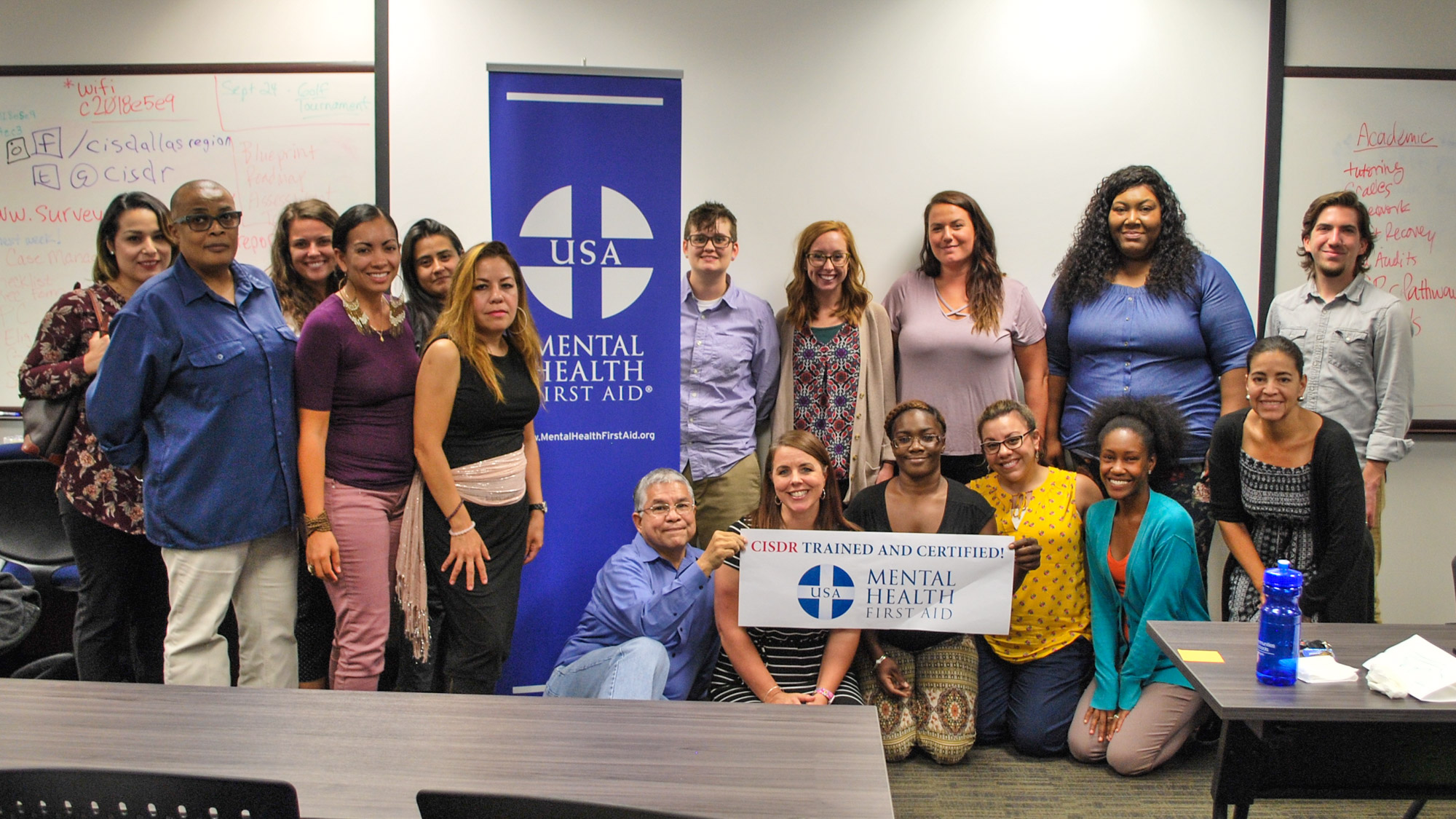No barriers.
That's Darrin Cox's goal for the homeless student population in the Abilene Independent School District.
The Abilene Reporter-News reports Cox, the district's homeless student liaison, welcomes the responsibility to make sure no student has an excuse for not attending class.
So far, he said, the hard work is paying off in segments. Much more work, momentum and money are needed to transform his efforts into tangible success.
"I'm counting this year as an improvement," Cox said. "Our attendance vs. the overall attendance is about one percentage point below the general population. For me, one of the first things I set out to do was remove barriers.
"And it's happening."
Cox and social worker Heather Melchor -- a team of two under the federal programs umbrella of the school district -- have seen increases in homeless students each year they've been involved.
Local
The latest news from around North Texas.
Melchor serves as the district's McKinney-Vento social worker. She works exclusively with students who qualify under federal law as homeless.
The position originated under the McKinney-Vento Homeless Assistance Act of 1987, a federal law that provides federal money for homeless shelter programs and determines if a student is considered homeless by school district standards.
These federal regulations are far broader than simply not having a permanent roof overhead at night.
Through February, Cox said 1,216 students from early childhood education through to 12th grade have been identified. And there's more to come in the final months of the school year.
Last May, Cox reported 1,495 students identified. The year before that, 1,217 students. Fewer were identified the year before that.
According to Cox's data, the overwhelming majority of the students are in elementary school in "doubled-up" situations.
Doubled-up means the student possibly is couch surfing or the family lives in another family's home or apartment. Slightly less than 90 percent of the total homeless student population in AISD is in this type of dilemma.
So far in 2018-19, kindergarten has been hit the worst with 113 students reported homeless. Of those, 102 are listed as doubled up.
Data also tracks students who are unsheltered, living in a motel or hotel or in homeless shelters.
As of February, 485 Hispanic students (40 percent of the total homeless student population) reported being homeless. Meanwhile, 330 white students and 265 black students reported the same situation.
Mixed race/ethnicity students account for 110 homeless students, while small numbers were reported for Asian, Native American and Hawaiian within the district.
Melchor said boys suffer more in elementary while girls catch up in the later grades, as serious issues such as sex trafficking key on young women at higher rates than young men.
Melchor focuses much of her attention at the high school level, she said. Those students find themselves in situations where they can't or won't be at home, either because something happened to prevent being there or they've been pushed out.
"They've been kicked out for any reason," Melchor said. "They don't have anywhere to go. They end up couch surfing where they have to worry about getting kicked out again from where they're staying."
Melchor said one of her students was kicked out of the house because the student consumed the last doughnut at breakfast. Just like that, a student becomes a statistic, as long as he or she reports their situation.
Cox and Melchor hope more and more students, and their families, follow through on reporting, not just to track the numbers, but also to receive some of the benefits they can take advantage of while they're in these messy situations.
While Abilene ISD figures continue to increase each year, Wylie ISD said its homeless student population is not an issue.
Superintendent Joey Light said there are students in the district who are using the services the district provides, but the numbers are small.
"There has been no problem I'm aware of, and we haven't had difficulty working with the kids," Light said. "The numbers are low but we do have options to meet the needs of those kiddos. We just don't have many."
One of the most publicized benefits Abilene ISD can offer its homeless population is access to its store.
However, these items aren't for sale -- they're available to everyone.
New socks and underwear, shirts and shoes, backpacks and school supplies. They're available thanks to a number of donors who have stepped up over the course of the past three years to turn the store into a full-fledged shopping experience for anyone who walks through the district's administration center doors at 241 Pine St.
"There's not a day where somebody doesn't bring me something. And there's not a day someone doesn't come in to get something."
Cox started the store small, with whatever he could gather in an effort to provide some form of support to some of the neediest students who came through his office.
As word spread throughout the community of Cox's efforts, donations started coming in by the truck load. With the increased support, those emotional barriers to success started coming down and students became supported in ways they struggled with before.
"We've moved forward a lot," Cox said. "Everything a student needs to go to school is here, and we have help for them every day. There's no reason anymore for a basic need to get in the way of going to school."
Cox said the store, which now occupies multiple rooms in the district's Federal Programs offices and a storeroom in the administration building's bottom floor, is completely incapable of holding on to enough socks and underwear for the student needs it faces.
It's always running short in that department, he said.
School supplies are another struggle, as students continue to go through paper, pens and pencils throughout the school year.
Part of Cox's inability to keep the shelves stocked might be his attitude toward providing these items to those who ask.
"I don't say `No,"' Cox said. "Every time someone asks. It's crazy, it's fun and I'm enjoying my job."
In 1943, Abraham Maslow proposed a new look at human motivation. It's a scientific theory that permeates all aspects of the student homelessness issue within the district.
Maslow believed that human needs best fit on a triangle. The base of the shape is where basic, physiological needs reside. Above are the security needs, such a food, water and shelter.
You have to climb the triangle to the top to find areas where education becomes a need, with self-actualization being the peak. This is where a person studies morality, creativity and is able to concentrate on fact-finding.
Maslow's theory suggested people -- young children or adults -- need base needs fulfilled before they are motivated to seek these higher goals such becoming educated.
"When a child is coming from that sort of situation, when they come to school, the first thing on their mind is not learning," one AISD first grade teacher said.
The Reporter-News granted anonymity to focus on the issue, not the teacher's school.
"If they don't have a place to sleep that's warm in the wintertime or comfortable in the summertime, they're not going to sleep," she said. "If they're exhausted, they're not able to learn. Many times, these kids are way behind where they should be when they're coming in."
This is where Cox's store comes in, the teacher said. Maybe it's getting the students clean clothes to wear so they're not ridiculed or their own set of crayons so they feel they belong. But each barrier that's broken allows the students to focus on education a little more than the day before.
The teacher said day-to-day work with these students to build relationships with them. Working in small groups helps, allowing them to form relationships not just with the teacher but with a few others in the class.
The goal is to make sure the student feels accepted in the classroom.
"Often, their behavior issues are the result of something that's gone on at home," the teacher said. "It's something they have no control over. So, before we can close those gaps, we have to build those relationships so they trust us.
"Often, we modify some of our expectations to get that relationship going. We start where they are and get them to where we need them to be. It's helping them understand that we all make mistakes, we're not perfect. We help them feel safe here, that they're not going to have this held over their head all day or all week.
"We know if those basic needs aren't met, their minds are on those things and not in a place where they're ready to read."
While day-to-day life requires undergarments and students need new tools to complete their school work, there's a much bigger problem at play that both Cox and Melchor said needs immediate attention.
"The biggest thing Abilene needs is a youth shelter," Melchor said. "A 17-year-old kid who leaves home because his mom is on drugs goes to a friend's house, then is told they have to leave because of an argument or something.
"You don't want to put a 17-year-old in the system. But they're just regular kids, just like all of the rest, from the valedictorian on the tennis team to the kid in trouble. They're all the same with the same basic desires."
Abilene has created facilities for homeless adults. And the foster care system addresses needs for young children. It's the teens who fall through the cracks, Melchor and others say.
It's like that all around the country and throughout the world. Abilene is no different than other communities, they say.
Cox also is working on expanding some of the programs that help get food into the hands of the students who need it the most. It's another barrier that could come down if he's able to expand programs such as the Taylor Snack Pack program, which provides students food for the weekend.
Abilene ISD has taken steps to address its homeless population's needs.
And with interest brewing in expanding the food programs and building up a new youth and teen shelter, there might be hope for bigger things in the future.
"We need to take some serious steps in the next two years," Cox said. "We've seen drastic improvement over the last two years but we still have some who are below where we can even help them. Some of our students are in drastic situations."
That's where getting the word out, spreading the message of AISD's programs, can help, Cox said.
Community groups have played a tremendous role in helping expand the store. He's enjoyed having an intern, Samantha Pennese of Hardin-Simmons University, spending part of her time organizing and restocking the store when she's not working directly with Melchor.
The more the word spreads about the school district's efforts and what they want to do in the future, the more they'll be helping, Cox said. And it'll end whatever negative stigma gets attached to seeking help when unable to help yourself.
"It's not a disgrace or an embarrassment to come in here for help," Cox said. "We don't want anyone to feel that way, because it's not. We're just here to help. We just want to help."



